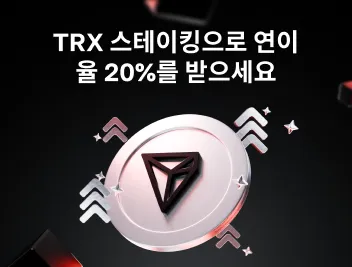
암호화폐는 어떻게 배당금을 지급합니까?
“크립토 배당(crypto dividends)”이라는 개념은 블록체인 네트워크가 단순한 거래 처리에서 벗어나 점점 더 발전함에 따라 점점 더 중요한 주제가 되고 있습니다. 스테이킹, 대출, 유동성 프로토콜의 성장으로 투자자들은 전통적인 배당과 유사한 형태의 수동적 소득을 얻을 수 있게 되었지만, 그 방식은 전혀 다릅니다. 이 글에서는 암호화폐가 어떻게 배당에 해당하는 수익을 생성하는지, 가장 일반적인 수익 방식은 무엇인지, 그리고 시작하기 전에 고려해야 할 사항을 설명합니다.
암호화폐에서 배당을 얻는 방법은?
기업 이익에서 지급되는 전통적인 배당과 달리, 암호화폐 기반 보상(예: ETH, TRX, USDT 수익률)은 블록체인 네트워크 내 다양한 수동적 수익 메커니즘에서 발생합니다. 대표적으로 다음을 포함합니다:
- 스테이킹(Staking)
- 마이닝(Mining)
- 크립토 대출(Crypto Lending)
- 유동성 파밍(Liquidity Farming / Yield Farming)
아래에서 이 수익 방식들을 자세히 설명합니다.
1. 스테이킹 (Staking)
스테이킹은 지분증명(PoS) 합의 알고리즘을 사용하는 블록체인 네트워크에 암호화폐를 일정량 예치하여 락업하는 과정입니다. 참여자는 트랜잭션 검증 및 네트워크 보안을 돕는 대가로 보상을 받습니다. 이러한 보상은 배당처럼 주기적으로 지급됩니다.
간편한 스테이킹 방식을 찾는 사용자에게 Cryptomus는 직관적이고 쉬운 인터페이스를 제공해 기술적인 설정 없이도 손쉽게 보상을 받을 수 있습니다.
2. 마이닝 (Mining)
마이닝은 배당 형태는 아니지만, 하드웨어・전기・유지 관리가 필요한 별도의 활동으로서 수동적 암호화폐 보상을 얻는 또 하나의 방법입니다.
마이닝은 비트코인(비트코인, BTC) 및 라이트코인(LTC)과 같은 작업증명(PoW) 네트워크에서 사용되며, 새로 발행되는 코인을 받는 대가로 트랜잭션을 검증하고 블록체인을 보호하는 과정을 의미합니다.
전통적인 마이닝은 ASIC 기기를 필요로 하지만, Monero(XMR)처럼 PC로도 마이닝 가능한 코인도 있습니다. 일부 경우에는 스마트폰 마이닝도 가능하지만, 성능 제약과 과열 문제로 비효율적입니다.
3. 크립토 대출 (Crypto Lending)
크립토 대출은 투자자가 자신의 디지털 자산을 차입자에게 빌려주고 이자를 받는 방식입니다. Aave, Compound, Celsius 같은 플랫폼은 이 과정을 지원하여 능동적 관리 없이 수동적 소득을 얻을 수 있게 합니다. 이자율은 플랫폼과 시장 상황에 따라 다르지만, 전통적인 은행보다 높은 경우가 많습니다.
4. 유동성 파밍 (Yield Farming)
유동성 파밍은 Uniswap, PancakeSwap 같은 DeFi 프로토콜에 유동성을 공급하는 방식입니다. 투자자는 유동성 풀에 자산을 예치하여 거래 수수료 및 거버넌스 토큰을 받습니다. 높은 수익률이 가능하지만, 무상손실(Impermanent Loss) 및 시장 변동성 등 리스크도 큽니다.
각 전략은 위험도와 수익률이 다르며, 투자자의 목표와 위험 감수 성향에 따라 적절한 방법이 달라집니다.

스테이킹으로 보상을 지급하는 주요 암호화폐
스테이킹은 암호화폐에서 수동적 수익을 얻는 매우 인기 있는 방법입니다. 네트워크 보안에 기여하는 만큼 보상을 받게 되며, 스테이킹 규모가 클수록 잠재 수익도 커집니다.
-
이더리움(ETH) — ETH 2.0으로 전환 후 스테이킹은 네트워크 보안의 핵심 요소가 됨. APY: 4%-6%.
-
Polkadot (DOT) — 크로스체인 기능을 지원하는 블록체인. APY: 10%-12%.
-
Tezos (XTZ) — 자기 수정(Self-amending) 기능의 블록체인. APY: 2%-5%.
-
Tron (TRX) — 높은 보상과 빠른 거래 속도로 인기. Cryptomus에서 최대 연 20% 가능.
-
Binance Coin (BNB) — Binance 생태계에서 다양한 혜택 제공. APY: 7%-8%.
-
USDT — 변동성 위험 없이 안정적 수익. APY: 3%.
-
Cosmos (ATOM) — 블록체인 상호운용성 강화. APY: 7%-10%.
-
Avalanche (AVAX) — 고속・확장성 중심 설계. APY: 4%-7%.
-
Algorand (ALGO) — 고효율 블록체인. APY: 4%-5%.
-
Bitcoin Minetrix — 매우 높은 잠재 수익(50%-150%)이 있지만 위험도 높음.
마이닝 가능한 암호화폐
마이닝은 여전히 암호화폐를 얻는 기초적인 방식입니다. 마이너는 복잡한 연산 문제를 해결해 트랜잭션을 승인하고 블록을 생성합니다.
-
비트코인(BTC) — 가장 유명한 암호화폐. ASIC 필요.
-
Litecoin (LTC) — Scrypt 알고리즘 사용. LTC 마이닝 가이드
-
Dogecoin (DOGE) — Litecoin과 병합 마이닝 가능. DOGE 마이닝 가이드
-
Zcash (ZEC) — zk-SNARKs 기반 프라이버시 코인. GPU 마이닝 가능.
암호화폐 대출 (Lending)
Aave, Compound, Celsius 같은 플랫폼에서 자산을 대출해 이자를 받을 수 있습니다. 하지만 스마트 계약 취약점, 차입자 디폴트 등 위험이 존재합니다.
유동성 마이닝 (Liquidity Mining)
유동성 마이닝은 DEX(탈중앙화 거래소) 또는 대출 프로토콜에 유동성을 제공하여 수수료와 토큰을 받는 방식입니다.
Uniswap, PancakeSwap, Curve Finance 등이 대표적입니다.
하지만 무상손실, 시장 변동성, 스마트 계약 공격 등 리스크가 존재합니다.
각 전략은 서로 다른 위험·보상 구조를 가지며, 암호화폐는 전통적 배당은 없지만 다양한 수동적 수익 메커니ズム을 제공합니다.
암호화폐 수익의 위험과 숨겨진 비용 이해하기
암호화폐로 수동적 수익을 얻는 것은 쉽고 자동적처럼 보일 수 있으나, 다음과 같은 중요한 리스크가 있습니다:
- 시장 변동성 — APY 10%도 가격이 30% 하락하면 의미 없음.
- 플랫폼 신뢰도 — 보안 감사 및 평판이 확실한 플랫폼 사용 필수.
- 스마트 계약 취약점 — 해킹 위험 존재.
- 세금 문제 — 대부분 국가에서 스테이킹/대출 보상은 과세 대상.
이 리스크를 이해하면 보다 안정적인 암호화폐 수익 전략을 구축할 수 있습니다.
FAQ
비트코인은 배당을 지급하나요?
아니요. 하지만 대출하거나 유동성 제공으로 수익을 얻을 수 있습니다. 마이닝은 배당과 유사한 보상을 제공하지만 비용이 큽니다.
이더리움은 배당을 지급하나요?
PoS 전환 이후, ETH 보유자는 스테이킹을 통해 정기적인 보상을 받을 수 있습니다.
솔라나는 배당을 지급하나요?
직접 배당은 없지만, SOL을 검증자에게 위임하면 네트워크 보상 일부를 받을 수 있습니다.
XRP는 배당을 지급하나요?
아니요. PoS도 아니고 마이닝도 없지만, 일부 중앙화 플랫폼은 XRP 예치에 대해 이자를 제공합니다.
따라서 암호화폐는 전통적인 배당을 제공하지 않지만, 스테이킹・대출・유동성 파밍・마이닝 등 다양한 수동적 수익 기회를 제공합니다.
블록체인 생태계가 성숙해질수록 이러한 방법은 더욱 신뢰할 수 있고 사용자 친화적으로 발전할 것입니다. 잠재력과 리스크를 이해하면 지속적인 수익 포트폴리오를 구축할 수 있습니다. 읽어주셔서 감사합니다!
글 평가하기








댓글
0
댓글을 게시하려면 로그인해야 합니다